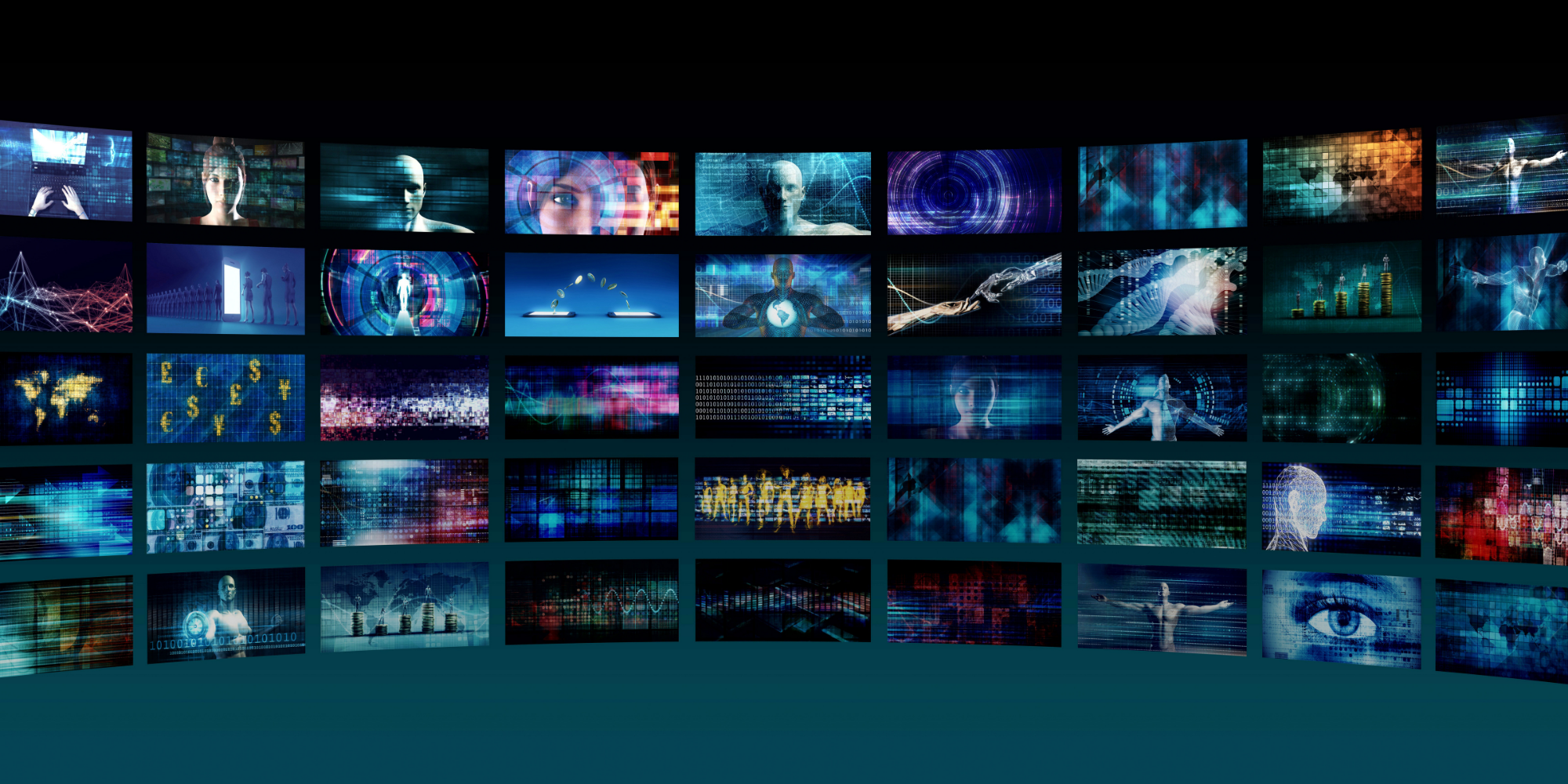
Choosing the Right Media Players: Pros, Cons, and Strategic Considerations for Digital Signage
Digital signage systems have transformed how businesses communicate with their audiences, and reliable media players are at the heart of this transformation. These devices are essential for delivering engaging visual content across retail, corporate communications, education, and entertainment industries. Whether creating straightforward signage or complex interactive displays, selecting the right media player ensures smooth and captivating viewer experiences.
What are Digital Signage Media Players?
Digital signage media players are specialized digital devices that deliver high-quality video and dynamic presentations across various digital signage applications. These digital signage media players stand out for their reliability, ease of use, and comprehensive support for different media formats and interactive functionalities. They serve various industries, including retail, corporate communications, education, and entertainment, offering solutions for creating engaging visual experiences.
At their core, these media players feature robust hardware designed for 24/7 operation under demanding conditions. They are often paired with software that simplifies content management and remote updates, making it easy for businesses to keep their digital signage fresh and engaging.
Pros of Digital Signage Media Players
Digital signage media players are essential in delivering effective visual communication, enabling businesses to engage audiences through dynamic content.
High Reliability and Durability
Media players used in digital signage are built to last. Designed to handle constant use in demanding environments, they ensure that your digital signage systems remain operational with minimal downtime. This reliability leads to reduced maintenance, saving businesses time and resources.
Less Downtime and Maintenance
Many media players are engineered to require minimal upkeep, meaning less downtime and fewer interruptions to your digital signage displays. This allows businesses to focus on creating content rather than dealing with technical issues.
Wide Range of Models for Different Needs
Media players come in a variety of models tailored to specific needs. Whether you're looking for basic features or advanced interactive capabilities, there's a solution available to fit your digital signage strategy.
Scalable Functionality
These devices offer various functionalities to suit basic and advanced digital signage projects. This flexibility makes it easy to scale your solution as your business needs evolve.
Easy Integration with Existing Systems
Modern media players integrate seamlessly with various content management systems (CMS), allowing for smooth updates and efficient content distribution. This makes it easier to manage multiple displays across different locations.
Support for High-Resolution Video
Most media players are optimized for high-resolution content, ensuring that your digital signage delivers crisp, vibrant visuals that capture and hold your audience’s attention. For businesses aiming to deliver vibrant, high-resolution displays, utilizing 4K media players can significantly enhance viewer engagement.
Enhanced Visual Experience for Viewers
The combination of high-definition support and robust performance enhances viewers' visual experience. Media players ensure that content grabs attention and is presented in the most visually compelling manner possible.

Cons of Digital Signage Media Players
While media players are highly regarded for their performance and reliability in digital signage solutions, they have certain drawbacks that potential users should consider. One of the main concerns is the higher cost associated with these players compared to some of their competitors. This elevated price point could be a barrier for businesses operating on tighter budgets, making the initial investment a significant consideration.
Another aspect to keep in mind is the learning curve for new users. Adopting media players and mastering their software to utilize the full range of capabilities can require considerable time and effort. This challenge may be more pronounced for individuals not particularly tech-savvy or new to the digital signage arena.
The Initial Investment can be Significant
The initial investment in media players can be significant, demanding careful consideration. Businesses must assess this cost in light of the players' durability, performance, and the potential to elevate the viewer experience.
The Learning Curve for New Users
Newcomers experience a noticeable learning curve with media players. Acquiring the knowledge to utilize their capabilities fully can take time, which is an essential factor for teams with limited technical expertise.
Requires Time to Master the Software
Fully exploiting the advanced features of media players requires time to master the software. This investment in time is essential for businesses aiming to create highly engaging and interactive digital signage content.
Limited Third-party App Support
A limitation of media players is their limited third-party app support. This can restrict the range of content creation and management tools available, impacting flexibility in designing digital signage solutions.
Final Considerations
When choosing the right media players for digital signage, several key factors come into play. The most critical considerations are balancing cost against long-term value, ensuring scalability, and selecting a solution that meets your business's specific needs. Making informed decisions in these areas can help you maximize the effectiveness of your digital signage system while keeping future expansion and cost-efficiency in mind.
Balancing Cost vs. Long-Term Value
The initial cost of digital signage media players can vary widely depending on their features, performance, and compatibility. Businesses with tight budgets may feel tempted to opt for cheaper, basic models to save money upfront. However, while entry-level media players might provide the core functionalities needed for digital signage, they may not offer the long-term durability, scalability, or advanced features required as your business grows.
The key to balancing cost with long-term value is to look beyond the price tag. High-quality media players, though more expensive initially, are typically designed to operate continuously with minimal downtime or maintenance. This durability results in fewer technical issues and a longer lifespan, reducing the need for frequent repairs or replacements. Over time, the upfront investment in a more reliable media player can save money by minimizing operational disruptions and maintenance costs.
Moreover, premium media players often come equipped with features like remote management, enhanced security, and the ability to handle high-resolution content, all of which add value to your digital signage network. Businesses that invest in such features from the outset will find that their media players continue to meet their needs as their digital signage strategy evolves, making the initial investment worthwhile in the long run.
Importance of Future Scalability
As your business grows, your digital signage needs are likely to expand as well. What starts as a single screen in a retail store might evolve into a multi-location network of interactive displays. Media players must be able to scale with your business to accommodate this growth.
A scalable media player allows you to start small and add more displays or upgrade features as needed without having to replace the entire system. Look for media players that offer a range of models or modular options, allowing you to integrate additional functionalities as your requirements change. For example, a media player that initially supports basic signage can be upgraded to include interactive features or support for 4K video content as your business demands more sophisticated solutions.
Scalability also involves ensuring that the media player can integrate with your existing systems and adapt to future technologies. Choosing a media player that is compatible with multiple content management systems (CMS) or other third-party tools will give you the flexibility to switch or expand your digital signage ecosystem without significant disruption. As technology evolves, your media players should be able to adapt to new formats, integrations, and features seamlessly.
Choosing the Right Solution for Business Needs
Ultimately, the right media player for your business will depend on your specific needs, goals, and the environment in which the digital signage will be used. Businesses in different industries have different requirements - what works for a small retail store may not be the best solution for a large corporate office or a restaurant with multiple interactive displays.
Start by defining your primary objectives for digital signage. Are you looking to inform, engage, or entertain your audience? The type of content you plan to display, such as static images, videos, or interactive touchscreens, will heavily influence the media player you choose. For example, businesses that require interactive displays or high-resolution video will need more advanced media players capable of supporting these features.
Additionally, consider the environment in which your digital signage will be installed. For example, displays in outdoor or high-traffic areas may require rugged media players built to withstand harsh conditions, while indoor displays may prioritize other factors like ease of installation and content management.
Another important aspect to evaluate is your team's technical expertise level. Some media players come with more advanced features that may require a steeper learning curve or additional training to fully utilize. If your team lacks the time or technical skill to manage complex systems, it may be worth choosing a media player that offers user-friendly interfaces and comprehensive support.
Finally, businesses should consider the total cost of ownership (TCO), which includes not only the initial cost of the media player but also ongoing costs like maintenance, software updates, and potential upgrades. Understanding the full range of costs will help you choose a solution that delivers value over time while staying within your budget.
Conclusion
Choosing the right media player is crucial for building a successful digital signage network. Today's media players' reliability, durability, and advanced features make them ideal for a variety of business needs, whether you're deploying basic digital signage or creating more complex, interactive displays.
When selecting a media player, you must consider your specific requirements, such as scalability, integration with existing systems, and support for high-resolution content. Although the initial cost and learning curve might present challenges, the long-term benefits outweigh these factors, especially for businesses prioritizing delivering high-quality visual experiences.
If you're looking for additional support in managing your digital signage content, consider exploring comprehensive platforms like Rise Vision. These platforms can help streamline your operations, enhance the effectiveness of your digital displays and offer free digital signage options for your use. With the right tools and strategies, you can create a powerful and enduring digital signage solution tailored to your needs.
More From Our Blog
-

Screen Sharing for Workplace Collaboration | Rise Vision
Screen-sharing technology has transformed how teams communicate and work together in real-time, regardless of their location. It can make presentations more engaging, support remote work, and speed[…]
Read More -

How to Use PowerPoint for Digital Signage
To create stunning, attention-grabbing, and effective digital signage content, you need the help of content creation and presentation tools. One of the most popular is Microsoft PowerPoint, owing to[…]
Read More -

120 Digital Signage Content Ideas
So…. you decided you would invest in some digital signage software and you need some ideas for ways you can make it stand out. This article is your go-to source for the best digital signage content[…]
Read More
Keep Your Displays Interesting – Pick New Templates Every Week!
Every week, we send template recommendations that will make you look great and improve your audience experience. And the best part, they save up to 16 hours of content creation time every week!
12,300+ Organizations Trust Rise Vision, You Can Too
Schedule a Free Demo
You deserve the #1 all-in-one platform for digital signage, screen sharing, and emergency alerts.



































